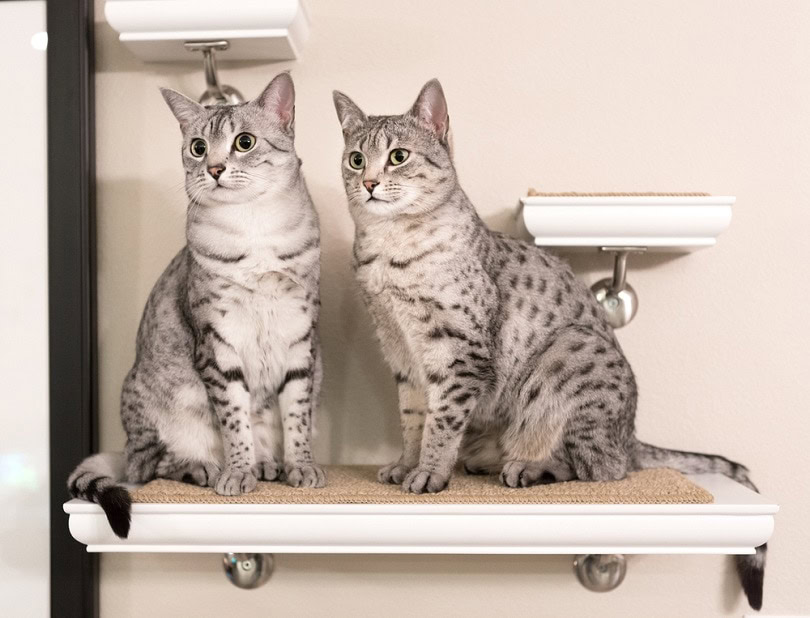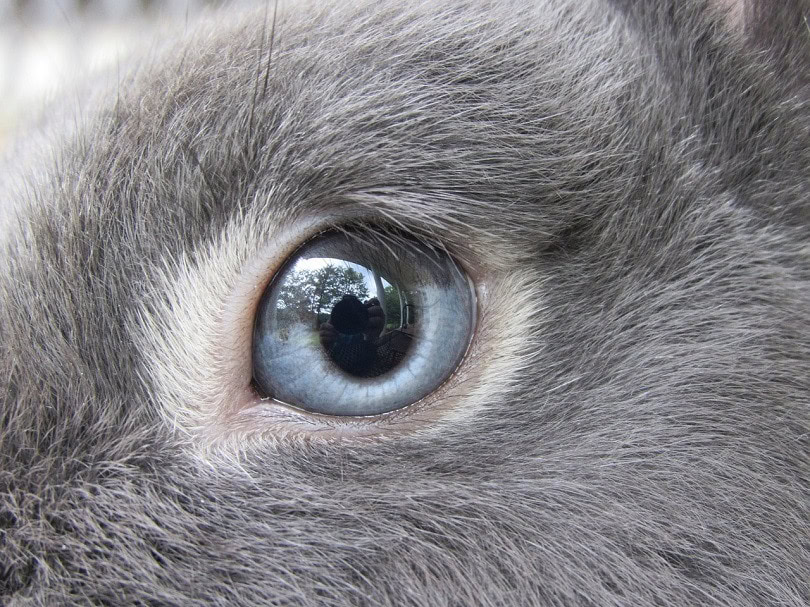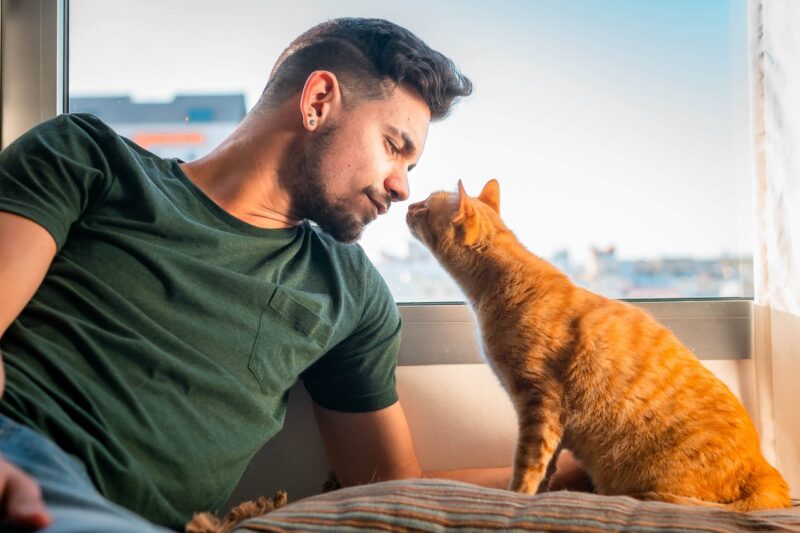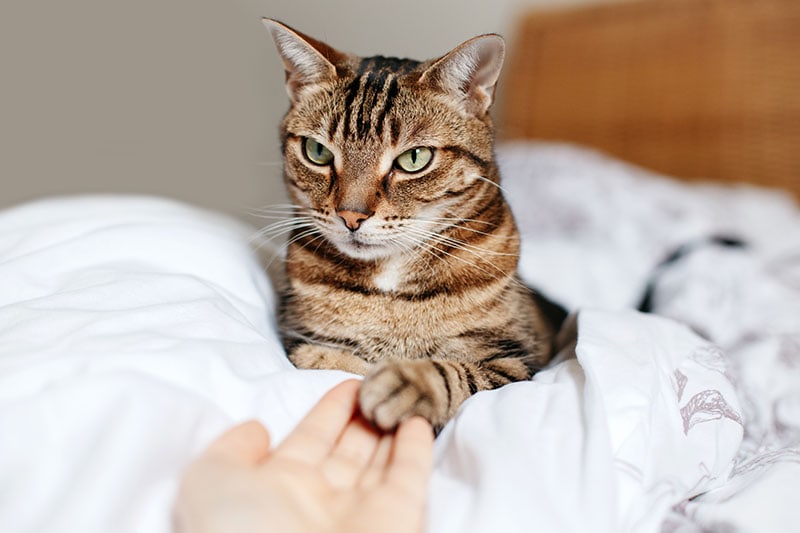VET APPROVED

The information is current and up-to-date in accordance with the latest veterinarian research.
Learn more »Whether your female cat has had a litter and you are waiting for the kittens to find a new home, or you have taken on two siblings from the same litter, it is common to wonder whether sibling kittens can mate, if they will, and whether it is even a bad thing for them to mate in the first place.
First and foremost, if sibling kittens of different sexes are kept together and are sexually mature, mating is almost certainly guaranteed. Cats are promiscuous and can indiscriminately mate with their siblings. In addition, cats can also mate with their parents or their offspring if the opportunity ever arises.
Unless you are an experienced breeder trying to raise a specific breed or trying to promote a certain phenotype in future litters, you shouldn’t allow sibling cats (or even your non-related cats) to mate. Read on as we explain this in greater detail.

When Do Cats First Go Into Heat?
Female cats are seasonally poly oestrus, which means that if conditions are right, they will continuously go into heat until they end up pregnant or until conditions are no longer considered right for mating.
Understanding what the “right conditions” are may seem tricky for some owners. It has nothing to do with the ambiance or a cat’s emotional state of mind. Instead, these conditions are physiological and environmental factors that trigger a cat’s brain to start their heat cycles. For a female cat to go into heat, the following conditions must be met.
- She must be an intact female (have a sound reproductive system, not be spayed).
- She must have attained approximately 80% of her maximum weight (this can happen when a kitten is as young as 4 months old).
- She must be exposed to around 10–12 hours of sunlight per day for a period of around a week or so.
- She must not have any other conditions/ailments that would otherwise prevent pregnancy.
Most healthy female cats can have their first heat when they are as young as 4 months old. In many parts of the world, the seasons don’t impact their heat cycle as exposure to light is always considered sufficient for them to actively cycle.
In temperate climates, seasonal shifts may trigger their estrous cycles to go “on” and “off”. In the US, the mating season for cats is considered to be from spring to around autumn. This means a kitten born in the middle of spring may in fact have enough time to become pregnant and give birth to her own kittens before the year ends.
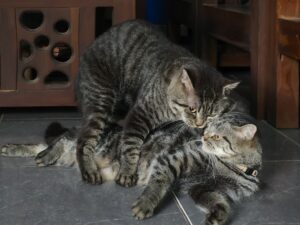
How Quickly Do Cats Reproduce?
Cats are induced ovulators; a female in heat will only release her eggs once she’s mated by a male. This often requires an average of just 3–4 matings within a 24-hour interval, though cats can easily fulfill this requirement in a few short hours if conditions are right (do note that each mounting session may only last around a minute or so at most). A female cat can mate with multiple males during a single heat cycle, and multiple kittens within the same litter can be fathered by different male cats.
Perhaps even more interesting is the fact that though lactation seems to suppress the estrous cycle in many animals, it doesn’t always do so in cats. This is found to be more true in cats with smaller litter sizes, though research has shown that several factors can contribute to this phenomenon.1 In other words, a cat with kittens that are nursing has relatively good odds of going into heat and becoming pregnant well before her kittens are weaned.
The factors above make cats extremely prolific breeders; many owners are caught unprepared and off-guard when they see how quickly their house becomes full of cats.


How to Stop Sibling Cats from Mating
If they are kept together, male and female sibling cats will inevitably try to mate. The only truly effective ways to prevent mating are by quarantining or separating the cats or having them desexed.
1. Separate Them
Separating the cats ensures that they can’t mate. In the short term, this means quarantining any males or the female cat so that they cannot come into contact with the other cats. However, keep in mind that while this will prevent mating (assuming no cat escapes), it will not stop the other undesirable effects of a cat in heat.
For example, a cat in heat will still yowl, likely spray urine, and try to escape, even in the absence of a male cat.
2. Desexing
Desexing is considered the best option, except where you want to be able to breed the cats at a later date. The term desexing might be referred to one of the following (depending on where you stay):
- Spaying or ovariohysterectomy for females
- Castration or orchiectomy for males
- Neutering for both males and females
Do note that in some parts of the world, the term “neutering” is often incorrectly associated with males only.
Desexed cats also have a longer lifespan, as they are less likely to develop certain cancers or disorders. In addition, early desexing may reduce the risk of some diseases in cats as well.2
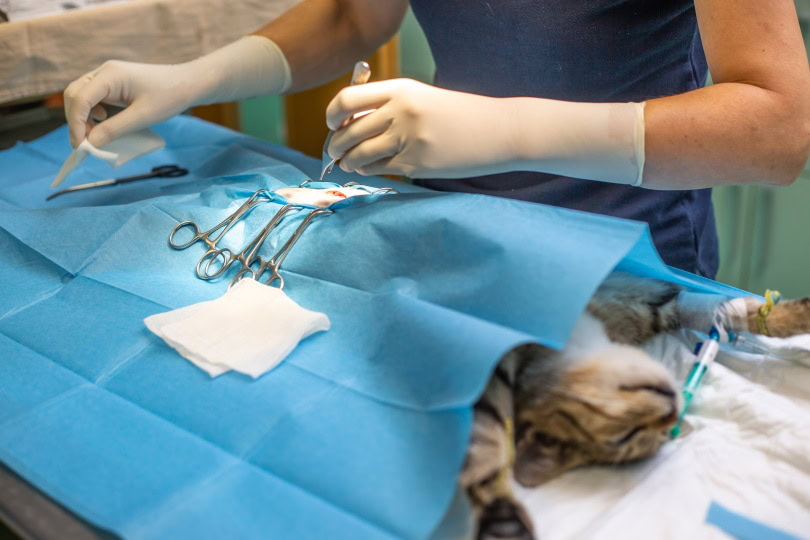

Conclusion
Female cats can have multiple litters of kittens every year, starting potentially from the age of around 4 months. And, just because a male and female cat are siblings does not naturally prevent them from mating. You will need to take definite action to prevent sibling cats from mating because when a female comes into heat, any intact male that senses the female in heat will try to mate with her.
Consider having the cats castrated or spayed, or, if you are keeping the kittens, ensure that you are well aware of the resources required to do so (both financially and in terms of time commitment).
Featured Image Credit: Sarah Fields Photography, Shutterstock
